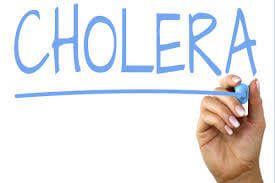Nausea and Vomiting can occur separately depending on the cause. Usually, nausea and vomiting are harmless, but they can be a sign of a more serious illness.
Nausea is an uneasiness of the stomach that often comes before vomiting. Vomiting is the forcible voluntary or involuntary emptying of stomach contents through the mouth.

Possible Causes of Nausea and Vomiting
Nausea and vomiting are not diseases, but they are symptoms of many conditions such as:
- Motion sickness or seasickness
- Early stages of pregnancy
- Medication-induced vomiting
- Infections
- Heart attack
- Concussion or brain injury
- Brain tumor
- Ulcers
- Some forms of cancer
- Overeating
- A reaction to certain smells or odors
- Bulimia or other psychological illnesses
- Bowel obstruction
- Appendicitis
- Gastroparesis or slow stomach emptying
- Ingestion of toxins or excessive amounts of alcohol
- Intense pain
- Emotional stress
- Gallbladder disease
- Food poisoning
When to Call the Doctor about Nausea and Vomiting?
Call your doctor or for medical help about nausea and vomiting if:
- Nausea lasts for more than a few days or if there is a possibility of being pregnant.
- The home therapy is not working, dehydration is present, or there is a known injury that occurred which may be the cause of vomiting.
- The vomiting occurs for more than a day or if nausea and vomiting last more than 24 hours.
- An infant or child under six years vomits for more than a few hours or if diarrhea is also present, as well as if there is a fever, signs of dehydration, or hasn’t urinated for 4-6 hours.
- A child over the age of six years vomit lasts one day, diarrhea combined with vomiting lasts for more than 24 hours, there are signs of dehydration, a fever higher than 101 degrees, or the child hasn’t urinated for six hours.
Seek medical care if any of the following occur with vomiting:
- Diarrhea
- Rapid breathing or pulse
- There is blood in the vomit
- Severe headache or stiff neck
- Severe abdominal pain
- Lethargy, confusion, or a decreased alertness
How to Treat Vomiting?
Treatment for vomiting includes:
- Drinking gradually larger amounts of clear liquids.
- Avoid solid food until the vomiting episode has passed.
- Pregnant women experiencing morning sickness can eat some crackers before getting out of bed or eat a high-protein snack before going to bed.
- Vomiting linked with cancer treatments can often be treated with another type of drug therapy.
How to Prevent Nausea?
There are several ways to prevent nausea from developing:
- Eat slowly.
- Drink liquids between meals.
- Try to eat when you feel less nauseated.
- Avoid hard-to-digest foods.
- Consume cold foods or room temperature if you are nauseated by the smell of hot or warm foods.
- Rest after eating with your head elevated about 12 inches above your feet.
Medication Used For Nausea and Vomiting
- Dimenhydrinate – this is in a class of medications called antihistamines that is usually recommended to treat nausea and vomiting. Dimenhydrinate reduces the effects of the natural chemical histamine in the body that might be the cause of nausea and vomiting.









